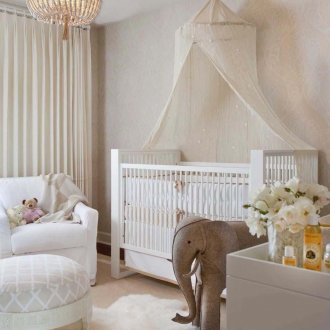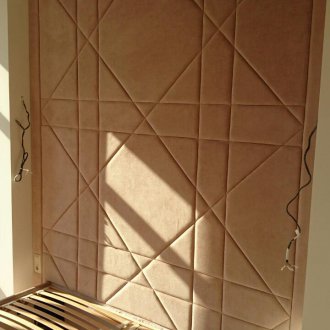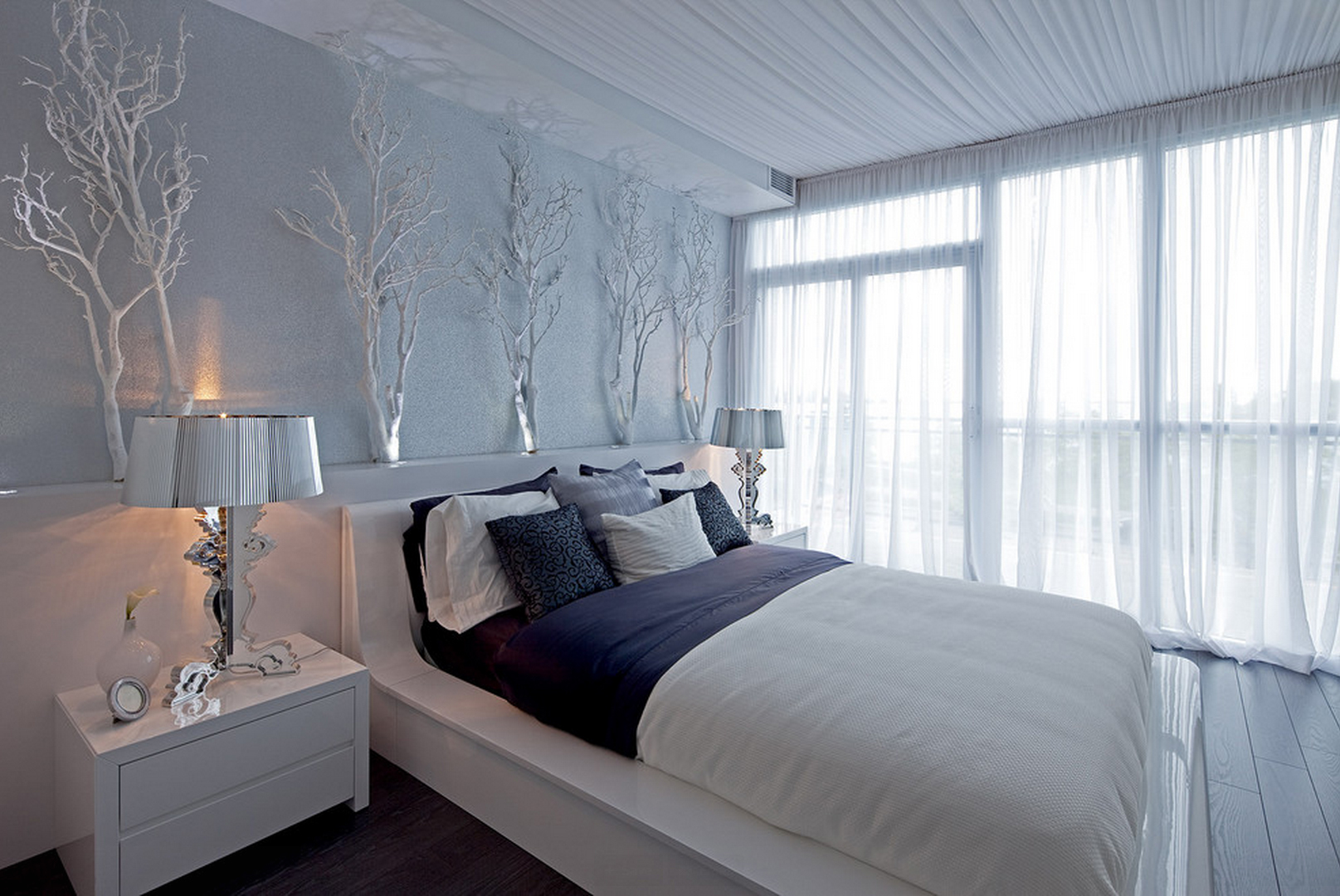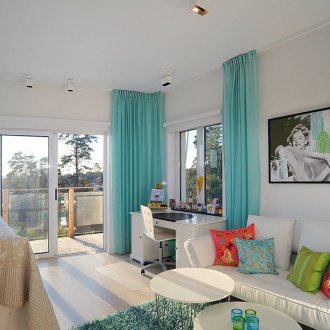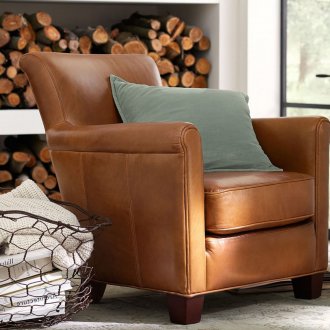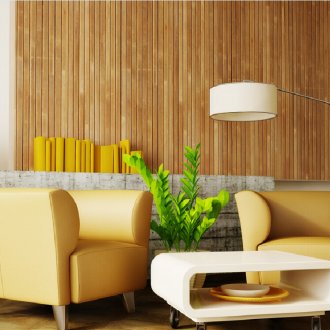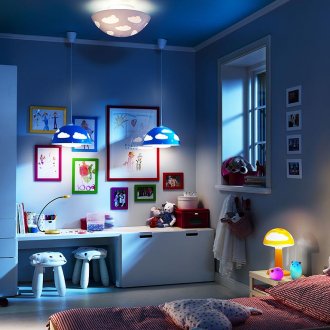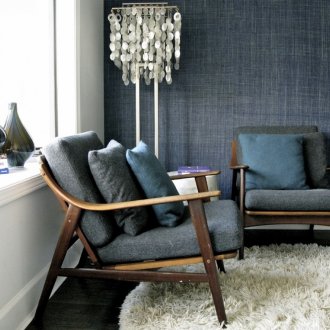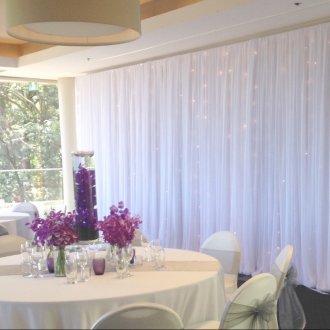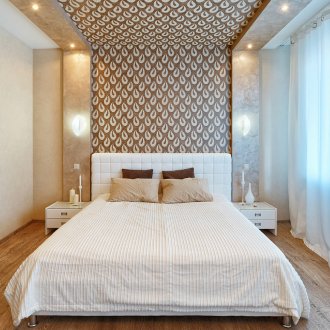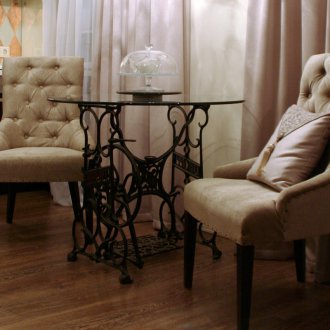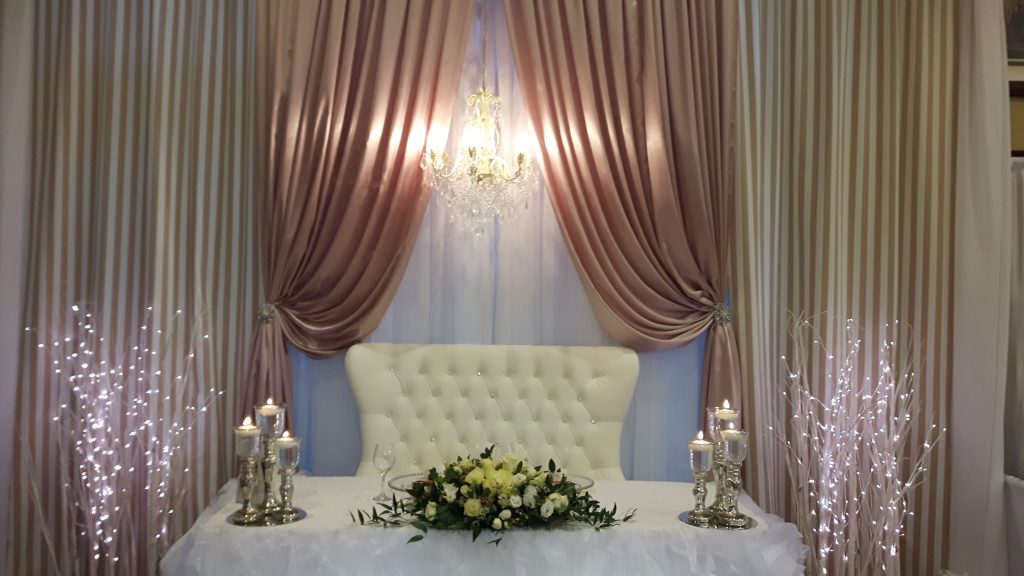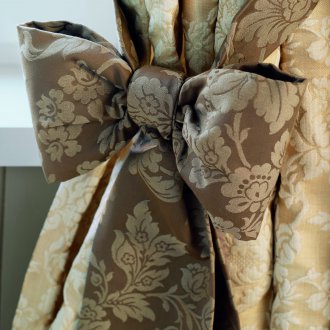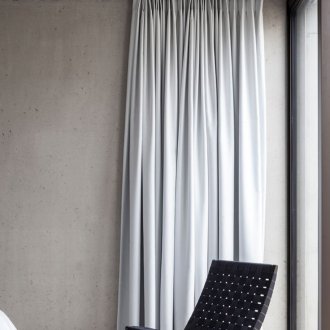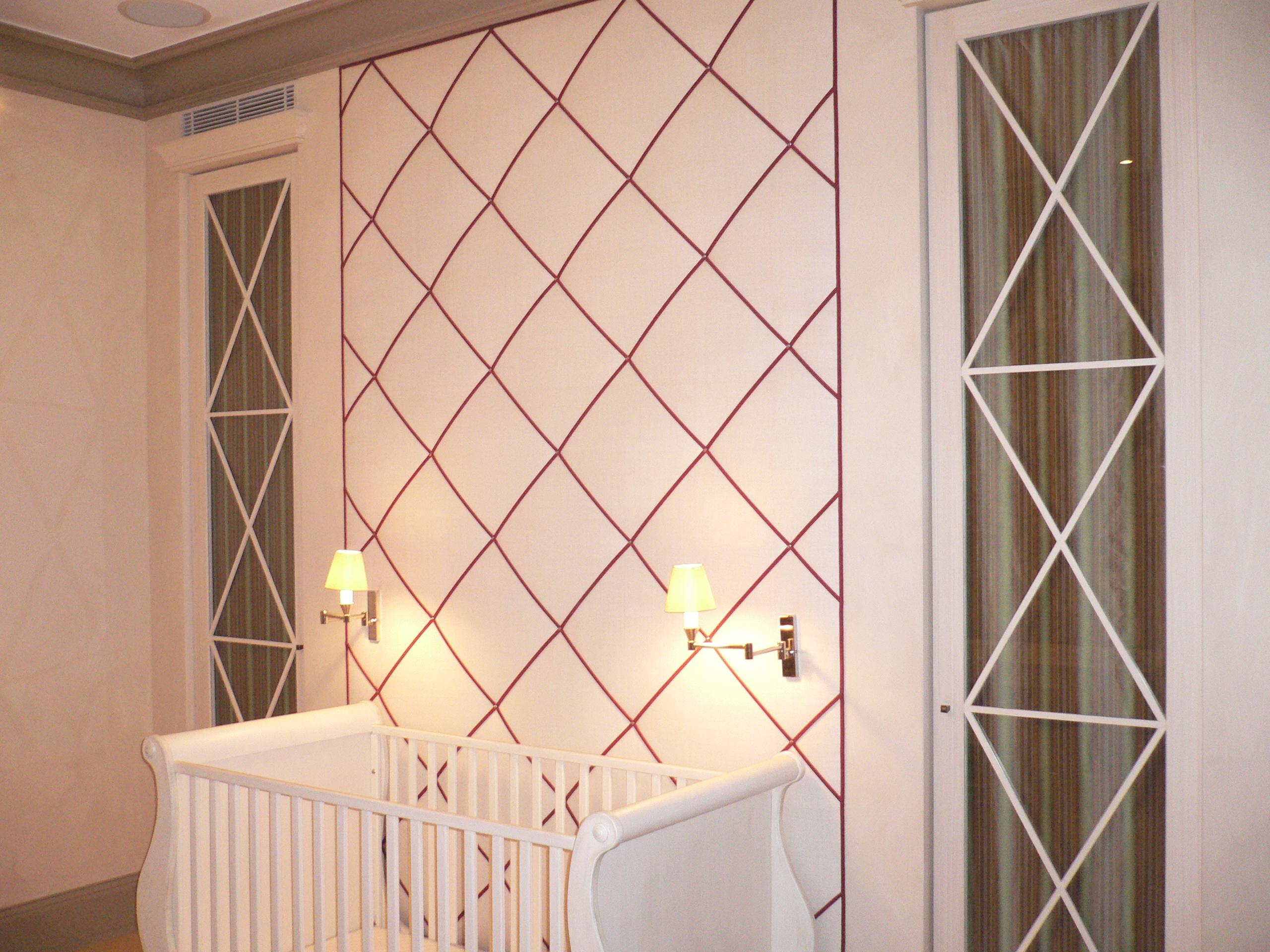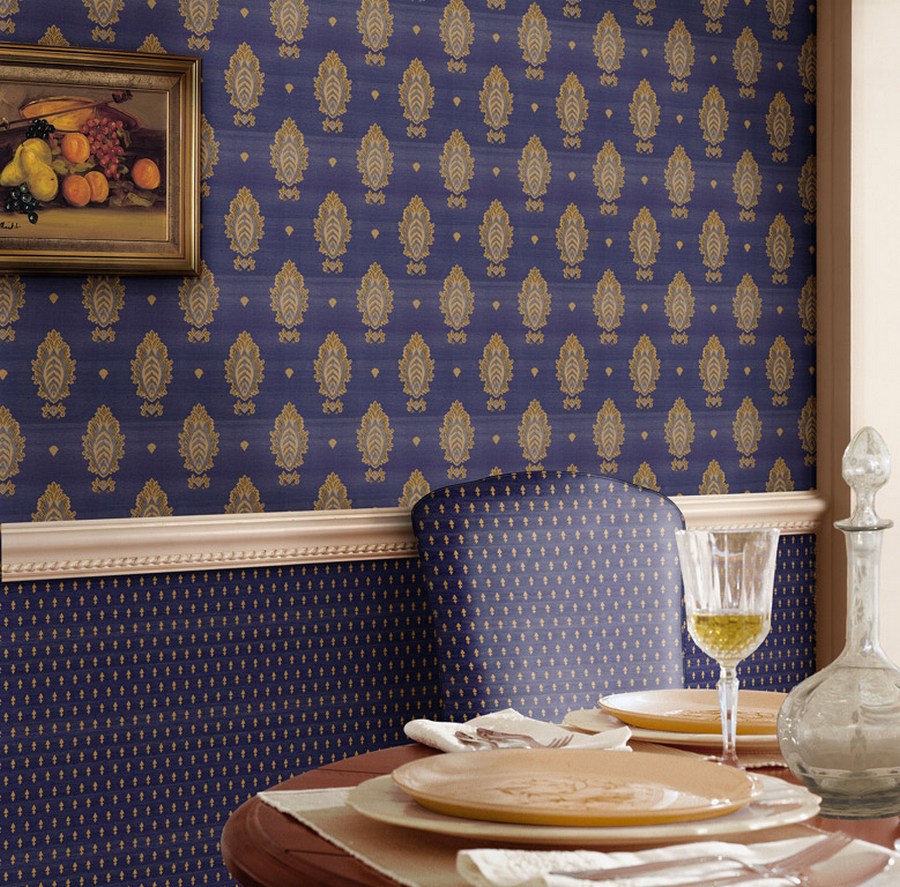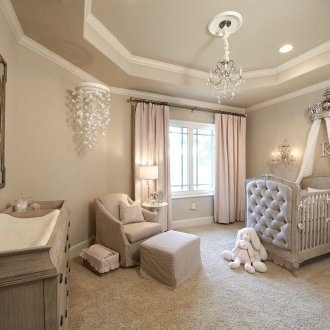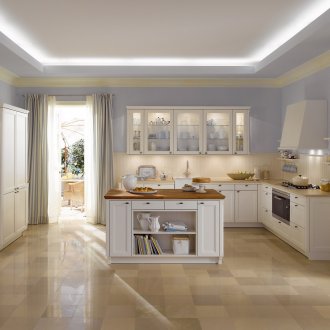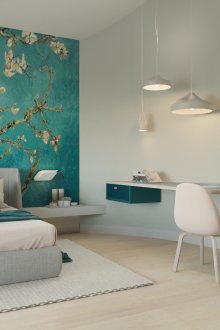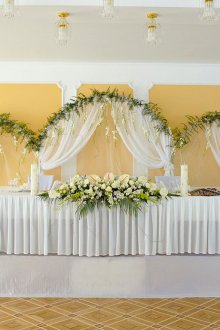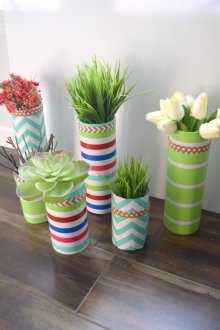Drapery of walls with fabric - comfort created by your own hands (21 photos)
Content
The use of fabric for decoration is a rather ancient design technique. The rooms decorated in this way were not only beautiful. They looked luxurious and solemn thanks to the use of materials such as silk, velvet, brocade. This design was available only to royalty.
Modern fabrics can also add solemnity or comfort to a home, depending on the desire of its owner. By draping walls with various fabrics, you can achieve a complement to the overall style of the room or add a unique accent.
The wedding hall is extremely popular. It is fashionable, beautiful, creates the effect of sophistication and nobility. It is appropriate to use velvet, velor. They will give the interior a luxurious look.
The holiday table is complemented by a wedding table and a wall behind the bride and groom. Pastel colors, airy fabrics flowing in soft folds, an abundance of bows, shuttlecocks, chiffon flowers emphasize the magnificence of the festive celebration.
It’s not easy to think through and complete the design of the hall for the wedding. In this case, the best option is to turn to the services of professional designers.
About the advantages and disadvantages of drapery
Room decoration using textile material is not only beautiful. This method has several advantages compared to wallpapering. Here are some of the positive characteristics of textiles:
- exceptional ability to create coziness;
- the ability to use for any interior style;
- kept clean longer;
- much stronger;
- easily hides problem areas on the walls: cracks, bumps, cavities;
- does not require preliminary preparation of walls (in most cases);
- damage caused by shrinkage of the building is excluded;
- there is no problem with the choice of rolls of the same color;
- in case of contamination, you can remove it with a soap solution;
- the fabric does not interfere with the access of air to the walls - they can breathe;
- with the additional use of foam rubber, good sound insulation is created;
- applying water-repellent impregnation, it is possible to reduce the sedimentation of dust;
- Do not lose color as fast as wallpaper;
- if damaged, it’s easier to restore.
The most compelling argument in favor of drapery with textiles is a relatively easy option for performing work that does not require special qualifications.
It should be noted that there are some disadvantages:
- high price of the material;
- difficulties in installing electrical outlets and switches;
- difficulty in choosing the glue necessary for the type of fabric used.
Despite these problems, more and more preference is given to the fabric decoration of the premises. Its popularity is supported by the emergence of new types of finishing materials.
Work technique
Drapery the walls with a cloth with your own hands - a process that requires some knowledge about how to perform work. The most common of these are upholstery, gluing and fabric draping.
Upholstery
Upholstery is carried out in two ways - pulling textiles under the rail and on the rail. In this case, cotton or cotton with the addition of viscose is used.This method is the most difficult, it is difficult for one person to cope with it. Working process:
- you should take the canvas with an allowance of 10-15 cm more than required;
- the fabric is fixed on top in opposite corners with maximum tension;
- from above, with special care, screws are fixed to the rail every 10-18 cm;
- textiles are fixed at the lower corners and bottom of the wall;
- similarly performed sides.
The final step is the removal of excess material.
To upholstery on the rail, you must first prepare a wooden frame. Attach the fabric to the frame with a stapler or self-tapping screws. The mounting sequence is similar to the method described above.
Wall covering with fabric
This type requires high-quality wall preparation: cleaning, puttying, primer. The fabric is also pre-treated: soaked in water, dried, ironed to avoid shrinkage. The following operations are carried out further:
- From the entire width of the material, a whole web is sewn along the size of the wall with an allowance of about 20 cm.
- Roll it up a roll.
- One edge of the wall is smeared with glue to a width of 10 cm.
- A fabric is applied to this edge, taking into account the allowances from below, from above and from the side.
- One holds the roll, the other evenly smooths the fabric with a roller or spatula for wallpaper.
- To fix the fabric on top, a strip of glue is also applied.
- The fabric roll is unwound and adhered at the same time.
- On the other side of the wall, glue is also smeared and the canvas is smoothed.
The sequence may be different: first the top, then the sides and the bottom of the canvas.
Fabric Drapery
This method is the most common and less laborious. It is characterized by a flight of fantasy, unlimited options for the methods used and, as a result, the creation of one's own masterpiece in an oriental or classical style.
Performance technique
This type of work is easily handled by one person, unlike the two previous methods.
Drapery of walls with fabric - a process that also involves following a sequence of actions:
- You must first attach the rail on which the drapery will be installed. It is also desirable to install a frame for fixing the sides of the drapery and its bottom.
- Prepare a canvas from thin, but dense textile. The width is much greater than the wall. The width of the folds depends on the width of the fabric.
- The edges of the cloth are hemmed on a typewriter.
- Stitch the tape from the inside, with the help of which folds are easily formed.
- Smooth thoroughly.
- Using a braid, you should bring the width of the fabric to the size of the draped wall, evenly distributing the folds.
- Now it remains only to fix the canvas with decorative mounts.
Everyone can do this option of draining the walls with their own hands in the presence of an upper bar and an installed frame.
Compliance with some rules
Having made the decision to independently finish the room with a cloth, it is necessary to take into account some requirements:
- the temperature in the room should be up to 20 degrees, humidity - up to 80%;
- the best option for the material used - the width is equal to the height of the wall, which eliminates the presence of unnecessary seams;
- existing lines are well camouflaged with slats covered with main textiles;
- the amount of material when buying it is advisable to take a little more, which can come in handy if necessary, restoration operations.
The implementation of the stages of work and following the simple recommendations will become the key to successfully completed work, which will delight the eye with its originality. Having decorated the room with fabric drapery, you can enjoy the sophistication of the interior and the comfort created by your own hands.
